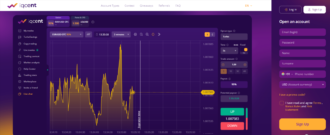Automating Options Trading: A Look at Cutting-Edge Technology
In the fast-paced world of finance, options trading requires precision, speed, and strategic thinking. With the rise of technology, automating options trading has become not only a possibility but a growing necessity for many traders. Keep reading as we explore the cutting-edge technology behind automated options trading, and how it’s transforming the financial landscape.
Why Use Automation in Options Trading?
Options trading can be complex and requires significant knowledge, experience, and attention to detail. Automation allows for greater accuracy and efficiency by taking human error out of the equation. Here’s how:
- Speed: Automated systems can execute trades in fractions of a second, an impossible feat for human traders.
- Consistency: Trading algorithms follow pre-set rules without emotions, providing a consistent approach.
- Scalability: Automation facilitates handling a large volume of trades simultaneously.
Technologies Behind Automation
Various technologies have come together to make automation in options trading possible. These are:
- Algorithms: These are at the heart of automated trading, executing trades based on predefined criteria.
- Machine learning: AI and machine learning can predict market trends and adapt option trading techniques and strategies in real-time.
- Cloud computing: This allows for flexible, scalable, and efficient processing, essential for the heavy computational demands of trading.
Benefits and Challenges
There are several benefits and challenges of automation in options trading, including:
Benefits:
- Increased speed and efficiency: Automated systems can process and execute trades far faster than humans. This speed provides a competitive edge in a market where milliseconds can often make a significant difference to your profitability.
- Cost reduction: By handling tasks that would otherwise require human intervention, automated trading can reduce labor costs for businesses. It allows for scaling up operations without a proportional increase in expenses.
- Risk management: Automated options trading algorithms can be designed to follow specific risk management rules, automatically adjusting or halting trading if certain conditions are met. This provides an additional layer of protection against sudden market changes.
- Access to global markets: Automation enables trading on multiple exchanges around the world at the same time. This provides opportunities that were once beyond the reach of individual traders or smaller businesses.
- Data analysis and insight: Advanced analytics tools process vast amounts of data, translating them into actionable insights. The result? Enhanced decision-making and strategy optimization.
Challenges:
- Technology dependence: Automation’s reliance on technology brings some vulnerabilities, such as potential system glitches, failures, or cyber-attacks. Ensuring robust reliability and security is crucial for success.
- Regulatory compliance: Adhering to ever-changing regulations across a range of jurisdictions can be complex. Automated systems must be designed to comply with legal requirements, a task that requires continuous monitoring and updating.
- Ethical considerations: Questions about the fairness of using highly sophisticated algorithms for options trading, potentially giving some traders an advantage over others, lead to broader ethical discussions. This includes concerns about market manipulation or the unintentional amplification of volatile market conditions.
- Skills gap: The shift towards automation creates a need for specialized skills. The lack of trained professionals who understand both the financial and technological aspects of automated options trading can hinder growth and innovation.
- Potential loss of human insight: While algorithms can process data with impressive efficiency, they might lack the nuanced understanding and intuition that seasoned human traders possess.
Automation in Action
There are various case studies highlighting the practical application of automation in options trading, demonstrating how diverse players in the financial industry have embraced this growing trend.
Let’s take a closer look at how this technology is being utilized:
- High-frequency trading firms: HFT firms were among the first to adopt automation, capitalizing on the ability to make numerous trades within microseconds. Through this technology, many firms have been able to reduce options trading costs and create a more efficient market, benefiting a broad range of investors.
- Robo-advisors: Robo-advisors have brought options trading to the masses by automating investment advice and portfolio management. This has allowed even novice investors to access sophisticated investment strategies, levelling the playing field.
- Hedge funds: Hedge funds have begun to integrate automation and AI into their trading strategies to analyze vast data sets and predict market trends. Many funds now employ mathematicians, statisticians, and physicists to develop highly complex algorithms. This has led to remarkable returns, revolutionizing how hedge funds operate.
- Retail brokerages: Many retail brokerages have integrated automation to provide a better user experience, facilitate faster trades, and offer advanced analytics tools. For some brokerages, this has attracted a younger demographic and reshaped how retail investors interact with the market.
Tips for Successfully Using Automation in Options Trading
Adopting automation in options trading can be highly rewarding but requires careful planning and execution. Whether you’re an individual investor, managing a trading firm, or someone interested in entering this field, here are some tips to consider:
- Understand the technology: Before implementing automation, understanding the underlying tech is key. This includes knowing how algorithms work, the role of AI, and the specific tools used in the process.
- Start with a clear strategy: Automation doesn’t replace the need for a robust options trading strategy. Outline clear goals, risk management techniques, and trading criteria before you automate the process.
- Comply with regulations: Always stay up to date with the regulatory environment in your jurisdiction. Ensuring compliance will mitigate any legal risks and help you build a more responsible approach.
- Monitor and adjust: Automated systems still require careful monitoring and adjustments based on market conditions. Keep a close eye on your options trading performance, and make necessary modifications as needed.
- Emphasize security: Protecting against cyber threats is essential. Be sure to implement strong security measures to safeguard both the technology and the sensitive data involved in trading.
- Focus on education and continuous learning: The automated options trading landscape is continually evolving. Take the time to engage in ongoing education and stay abreast of the latest trends, tools, and technologies.
The combination of technology and finance has proven to be a powerful one for options trading and one that continues to inspire and challenge. By embracing automation, we are creating a new path filled with potential. The future of options trading is here, and it’s automated.


















